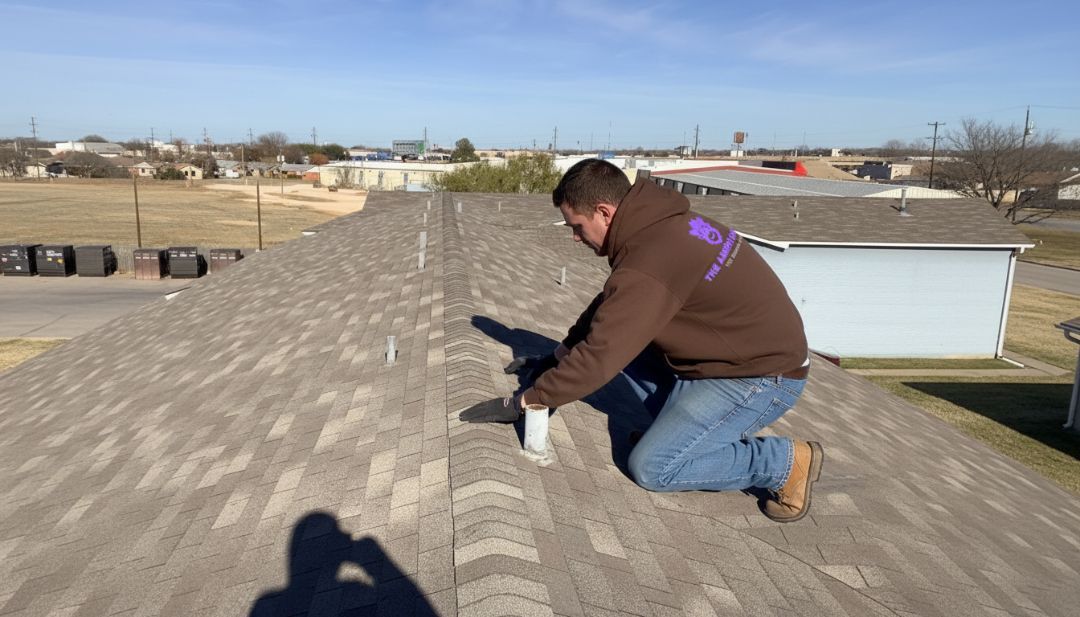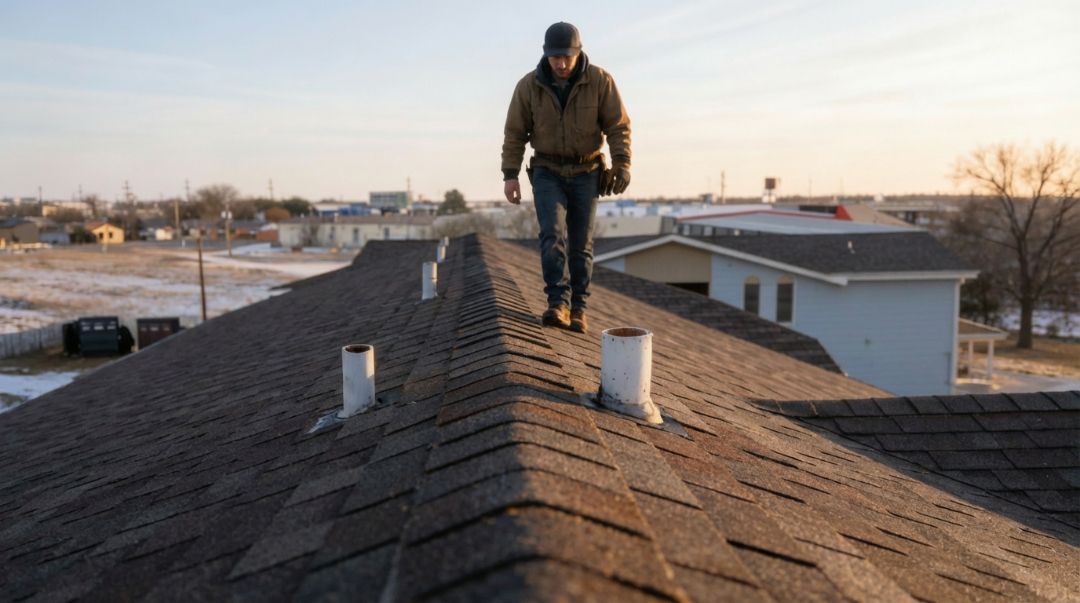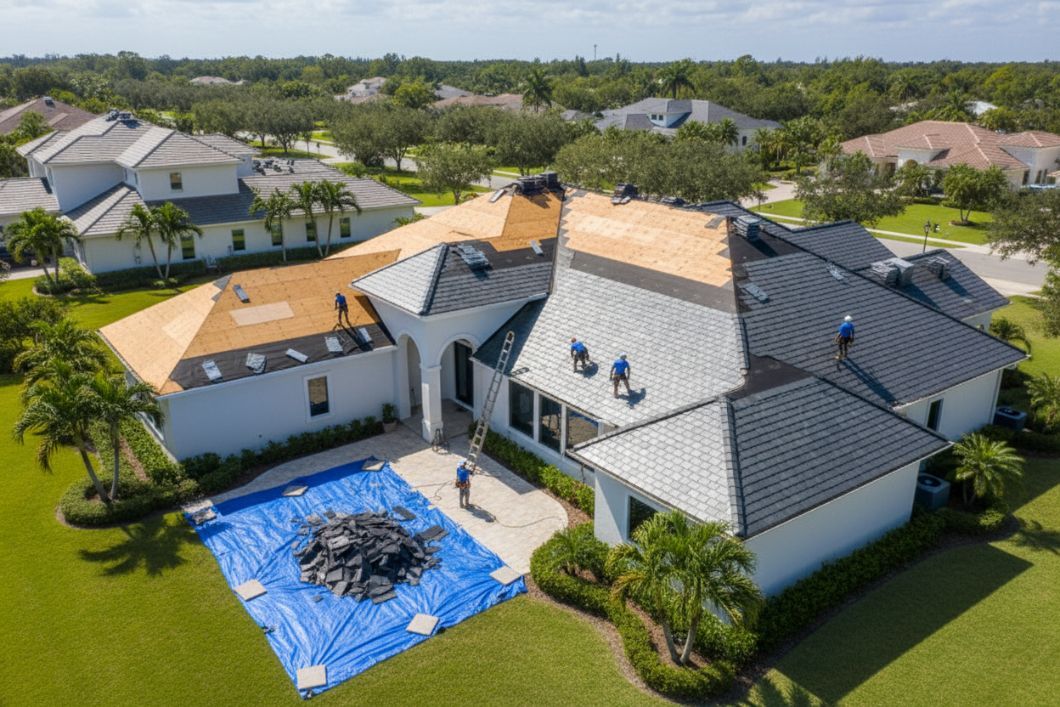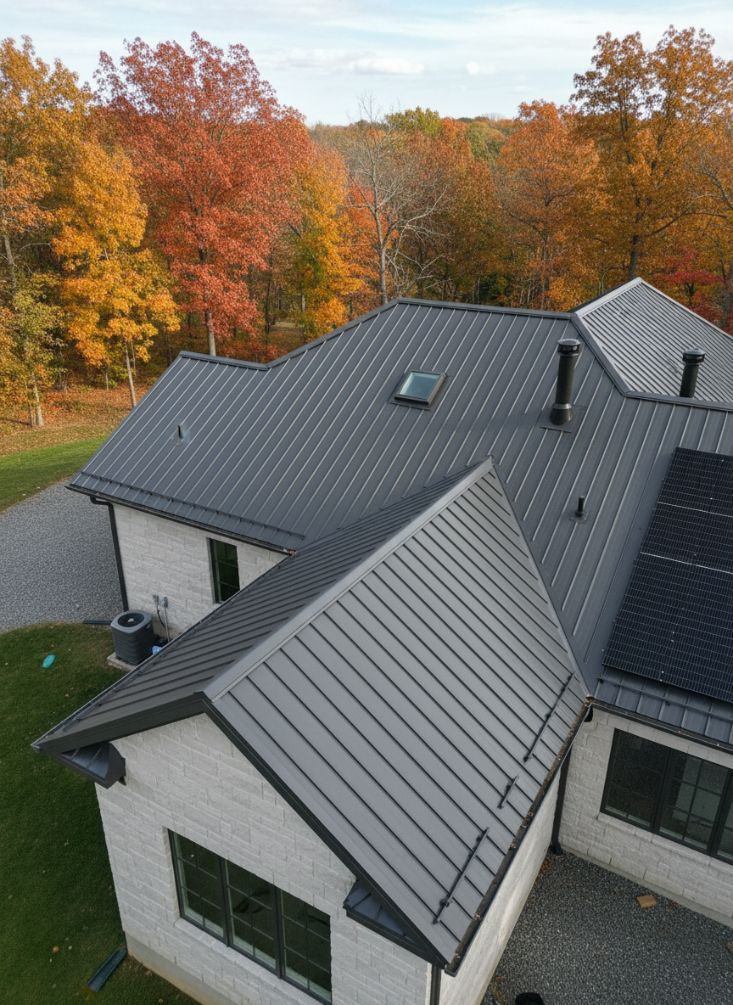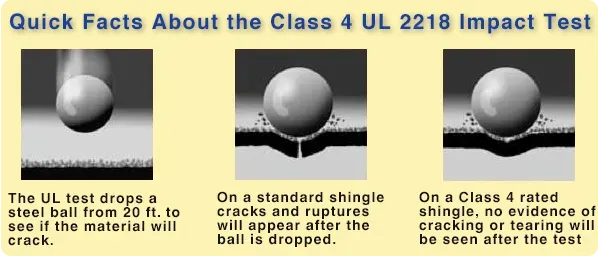What’s the Real Difference Between a Roof Repair vs. a Roof Patch?
TLDR;
A roof patch is a quick, localized fix for small issues like missing shingles or minor leaks, while a
roof repair addresses broader or deeper problems like structural damage or widespread wear. Understanding the difference ensures you invest in the right solution for long-term protection—especially under the harsh Texas sun and storm conditions.
Understanding Roof Patching: Quick Fix or False Security?
Picture this: you're enjoying your morning coffee when you spot a brown stain creeping across your ceiling. A quick look outside shows a few missing shingles from last week’s windstorm. Sounds like a job for a roof patch, right?
A roof patch is a localized solution. It’s designed to quickly stop a minor issue from becoming a major headache.
What Does a Roof Patch Typically Involve?
- Replacing a handful of missing or damaged shingles
- Sealing a small hole with roofing cement
- Addressing minor leaks near flashing or vent boots
- Temporary stopgaps until a bigger repair can be done
Think of a patch as a Band-Aid: it’s not meant to heal the wound, just cover it until deeper work is needed—if it’s needed at all.
When Is a Patch the Smart Choice?
- You caught the damage early (like right after a hailstorm)
- The issue is isolated to a single, easy-to-access area
- Your roof is relatively new and still under warranty
- Budget is tight and you need a temporary solution
But here's the truth:
patches have limits. And in Texas, with our unpredictable weather, surface-level fixes often aren’t enough.
What Roof Repairs Actually Involve (And Why They Matter)
Roof repairs go deeper. They’re intended to solve the root of the problem, not just mask the symptoms. That’s the major difference between a patch and a repair.
Common Roof Repair Examples
- Replacing damaged underlayment or decking
- Repairing cracked or rusted flashing
- Re-securing or replacing roof vents
- Addressing water damage or wood rot under shingles
- Fixing sagging sections due to structural strain
Repairs are
long-term solutions. Done right, they restore both functionality and lifespan—and they’re often what stands between a minor issue and a
full roof replacement.
When to Patch vs. When to Repair: Know the Signs
Here’s how to tell what your roof really needs.
Signs You Can Probably Patch:
- A few shingles are missing after a windstorm
- You notice a small, steady drip during heavy rain
- A visible puncture from debris or hailstone
- Flashing sealant is starting to peel
Signs You Need a Roof Repair:
- Multiple leaks across different parts of the home
- Sagging or soft spots when walking on the roof
- Visible signs of rot, mold, or structural decay
- Large areas of missing or curling shingles
- Persistent leak despite previous patching
Pros and Cons: Patch vs. Repair
Roof Patching – Pros:
- Lower initial cost
- Quick turnaround
- Ideal for newer roofs with isolated damage
Roof Patching – Cons:
- Doesn’t address underlying damage
- May void warranty depending on roofing system
- Can be a temporary fix that delays inevitable repairs
Roof Repair – Pros:
- Long-term solution
- Improves overall roof health and performance
- Often covered by insurance if damage is storm-related
Roof Repair – Cons:
- Higher cost upfront
- Takes longer, especially for complex problems
- May require more invasive work (removing layers)
Longevity & Visual Matching: Why Texas Roofs Need Smart Solutions
One thing most homeowners overlook? Sun fade.
If your roof has been baking under the Texas sun for years, new shingles will stand out like a sore thumb. A poorly matched patch doesn’t just look bad—it can lower curb appeal and even raise flags during home inspections or sales.
Repairing a larger area—even if not all of it is “damaged”—helps:
- Blend new materials better
- Reinforce vulnerable areas
- Prevent a patchwork look that screams neglect
Texas Climate Makes the Difference Bigger
Our state is infamous for:
- Sudden hailstorms
- Blistering UV exposure
- High humidity
- Flash floods
These factors accelerate wear and tear, especially on older or poorly installed roofs. A patch might buy you time, but if the weather keeps hitting the same spot—repairs or even replacement become inevitable.
Roofing Materials That Handle Texas Weather Better:
- Metal roofs: Reflect heat, handle hail better
- Cool roofs: Coated for solar reflectivity
- Impact-rated shingles: Higher upfront cost, but resist storm damage
Material Lifespan: How It Affects Your Decision
Different roofing materials age differently under Texas conditions.
Approximate Lifespans:
- Asphalt shingles: 15–25 years
- Architectural shingles: 25–35 years
- Metal roofs: 40–70 years
- Clay or tile: 50–100 years (but fragile under hail)
If your roof is near the end of its lifespan, even a small patch may not be worth it. A repair—or full replacement—may offer better long-term value.
Insurance & Warranty Considerations
One overlooked difference between patching and repairing is how it affects your roof warranty and insurance coverage.
Warranties:
- Patching may void manufacturer warranty if materials aren’t installed correctly
- Repairs must follow specific protocols to maintain warranty validity
- Many roof systems require certified installers for coverage to remain intact
Insurance Claims in Texas:
- Minor issues may not meet deductible thresholds
- Storm-related damage (hail, wind) often qualifies
- Document with photos, inspection reports, and contractor assessments
Always contact your roofer before filing. Some insurance adjusters may underreport visible damage—especially after storms.
Should You DIY or Hire a Pro?
Texas is one of the strictest states when it comes to contractor licensing—and for good reason. Unlicensed or unqualified repairs can:
- Void your roof warranty
- Lead to safety hazards
- Cause insurance denial
Why Hire a Licensed Roofing Contractor:
- Familiarity with Texas building codes
- Proven track record (check BBB ratings or local references)
- Proper equipment and crew for safe execution
- Accountability through warranties and liability insurance
Making the Right Call: Patch, Repair, or Replace?
The decision comes down to three key factors:
- Age of your roof
- Severity and spread of the damage
- Your long-term goals (sell, stay, refinance)
If your roof is:
- Under 10 years old with isolated damage → Patch is acceptable
- 10–20 years with moderate issues → Repair is the smarter route
- 20+ years or structurally failing → Replacement should be considered
Not sure if you're nearing replacement territory? Understanding
how much a new roof costs in Texas can help you weigh short-term fixes against long-term value. When in doubt, schedule a professional inspection and request a photo-backed report. A qualified roofer can explain what’s cosmetic, what’s serious, and what needs action now.
Expert Advice from Texas Roofers You Can Trust
Roofing decisions shouldn’t be made in a panic or based on guesswork. Whether you're dealing with a small leak or facing widespread storm damage, understanding the real difference between a patch and a repair helps you protect your investment—and your home.
For homeowners and property managers in Texas, the weather is tough. The roofing decisions you make today will affect your budget, your insurance, and your peace of mind tomorrow.
Don’t wait for that small leak to become a ceiling collapse. Contact a licensed Texas roofer for a free inspection and get expert help deciding between patching, repairing, or replacing your roof with confidence.

